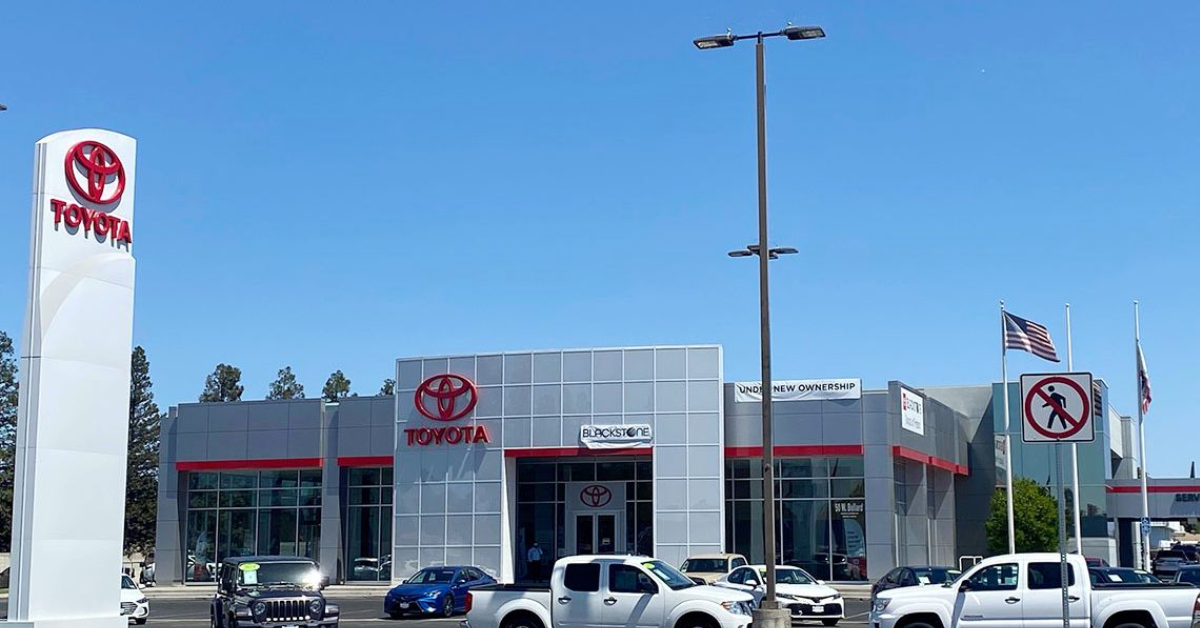It began nearly a decade ago with the expensive platitudes of Stefanos Polyzoides. It ended last month with the soft-spoken skepticism of Steve Brandau.
I’m talking about the long and strange odyssey of the creation of Downtown Fresno’s growth plans.
As we all know by now, the City Council on Oct. 20 unanimously adopted the Downtown Neighborhoods Community Plan, the Fulton Corridor Specific Plan and the Downtown Development Code.
Downtown revitalization has been advancing at an irregular but encouraging pace for at least a quarter-century (say what you will about the design of City Hall at P and Fresno streets, but there’s no denying that the early 1990s addition to Downtown’s skyline is striking). The two new plans and the new development code are supposed to turn stately progress into head-spinning greatness.
The council’s 7-0 vote last month had the feel of a formality. This is no knock on Ashley Swearengin and her team. The Mayor was justifiably proud of the documents. All good-hearted Fresnans share her hope for Downtown’s future.
But the moment of decision was such a long time coming! No need here to go into all the twists and turns of the last eight years. It’s sufficient to note that I remember Polyzoides’ promises when the City Council hired him in late 2009 to be the lead urban architect for the rebirth of Fresno’s urban core.
Those promises were grand, to say the least. Then again, what do you expect when City Hall at the start of the Great Recession decides to spend $2.7 million on your firm?
Polyzoides didn’t last long, but his fundamental vision endured. That’s because it mirrored Swearengin’s.
Fulton Corridor between Tuolumne and Inyo streets, Downtown as defined by the triangle created by Freeways 41, 99 and 180, and the 11 square miles that constituted pre-World War II Fresno would blossom again.
No, “blossom” isn’t the right word. Old Town Fresno would be “dynamic” again. With the Fulton Corridor Plan, Downtown Neighborhoods Plan and Downtown Development Code in place, Fresno’s urban core would be home to the constant evolution that occurs when liberty and human ambition are in the saddle.
You know – like Clovis.
But something unexpected happened along the way. The Swearengin Administration, goaded by community activists, blinked. Dynamic evolution – the adaptation of some to shifting Downtown conditions, the disappearance of others with less flexible characteristics – was no longer the goal.
Dynamism now has to share top billing in Downtown Fresno with another goal: Maintenance of the status quo.
What?
That was Brandau’s response on Oct. 20.
Let’s begin with the Mayor’s opening comments to the Council:
“Council President, members of the City Council, members of the public: We are so delighted to be here at this point in time,” Swearengin said. “I’m going to quickly hand-off to Dan Zack, who has a presentation for you. Before I do that, I just wanted to remind the council of the journey we’ve been on to get to this point.
“As a candidate for mayor in 2008, in looking at things that have held back investment in our Downtown, I spent a lot of time doing my due diligence and meeting with proper owners and experts in revitalization. I learned about this thing called a ‘specific plan.’
“I went on to campaign about the importance of specific plans in Downtown Fresno, despite my political consultant’s best advice to never say the words ‘specific plan’ in a debate or in front of the voting public. He was right, actually.
“But, thankfully, the voters had saw fit to hire me for this job, anyway.
“Beginning in 2009, from my earliest days in office, we began to work on a scope of work, to actually prepare a central business specific plan – what would become the Fulton Corridor Specific Plan. At that time, and have carried throughout the last eight years, the one thing that has been fundamental to the process is that we didn’t want to just focus on just the central business district to the exclusion of the historic neighborhoods surrounding the central business district.
“So, we actually did something that most people would never do in a million lifetimes, and that is we took on the central business district specific plan at the same time we did a concurrent neighborhood, resident-driven planning process for the surrounding historic neighborhoods – the Downtown Neighborhoods Community Plan – oh, and by the way, gluttons for punishment, we said we need a new Downtown Development code as well, to actually make it possible to implement the policies and the vision of these plans.
“So, that process – to get to the point where we scoped that work, got the money in our first budget, got support from the council, bid the work and actually got to the point where the consultants were under contract and we shoved the boat away from the dock – that took a full year.
“Beginning in 2010, we began the engagement process. We did that heavily for two years. I’ll spare you the rest the story because many of you have been along (on) this journey since then. But I just wanted to cause you to look back for a minute and reflect on what a historic moment this is today as I fully urge your support for passage of these plans.
“The last thing I’ll say, and (it’s) something I’ve learned very clearly from my experience over the last eight years, and that is this: The private sector looks to the public sector to define a space in which they can be successful. And for many, many years and for many, many decades, because of our lack of clarity, and because of our de facto land-use plans and policies by not paying attention to this part of the city, we actually created barriers to private investment.
“That’s what we seek to lower and remove with the adoption of these plans. Our goal is for investment in the urban core and to see that in an accelerated fashion and in a manner that benefits the people who live and work in Downtown today as well as the large number of additional people and businesses and activity that will come and populate our inner city once again.
“And with that, I will step aside and hand over to Dan Zack.”
(The Mayor delivered these 600-plus words in 3 minutes 14 seconds – nearly 200 words per minute. She is a marvelous public speaker, but 200 words a minute is too much concentrated excellence for many listeners to handle – especially when the topic is land-use regulation. Based on my dip into Google, some public-speaking experts advise a 140-words-per-minute rate for maximum effectiveness. Mayor, permit me to respectfully offer a suggestion: Study the way Patience Milrod speaks when at the Council Chamber’s public microphone.)
Assistant planning director Zack gave a concise review of the plans. Council President Paul Caprioglio opened the hearing to public comment. Fresnans once again tackled public policy with gusto.
Before I get to council member comments, allow me to mention the hearing’s cache of documents. The three key planning documents were there. They had been available for public review for months. There also were some last-minute additions to the vision.
Among those additions was a new goal, identified in five paragraphs:
- “As Downtown and the downtown neighborhoods grow in population, (the goal is to) ensure that existing residents and small businesses have opportunities to remain. Intent: To avoid the displacement of long-time residents and merchants that sometimes occurs as formerly distressed areas are improved.”
- “The Mayor and City Council should convene a displacement task force (to) explore ways to provide opportunities for low income residents and merchants to remain in their neighborhoods if significant displacement is observed due to substantial and sustained increases in rent. The task force should work in conjunction with low income residents, low income business owners, and property owners in the plan area.”
- “City staff should periodically gather data on lease rates, vacancy rates, and, if applicable, displacement for use by the task force. Staff should also study neighborhoods in other cities which have experienced displacement to assist the task force for identifying similar patterns within the plan area.”
- “The task force should identify a set of actions that can give displaced persons or businesses the opportunity to remain in the area if they wish to do so.”
- The city should “continue to seek funding for mixed income and affordable housing within (the) plan area, and work with the owners of affordable housing properties to ensure that affordability is maintained over the long term.”
One by one, council members expressed their support for the plans. Brandau was the last council member to speak at length.
Addressing Zack, Brandau asked who at City Hall might best clarify a few things about the task force. Zack yielded the microphone to Danielle Bergstrom, the Administration’s government affairs manager.
Brandau had a simple question for Bergstrom: What is the task force’s mission?
“We have been hearing from some members of the community that they are concerned about potential displacement (caused by) increasing investment in Downtown,” Bergstrom said. “That issue around displacement and gentrification, as you might imagine, is very complicated, and it is very hard to track. And so, for us from a policy-making perspective, it’s difficult for us to put in any measures in a concrete policy-way that might stop displacement without a clear sense of data on trends to help us track how that happens over time. So, the intent and purpose behind the task force is to help us gather the data so that we know if there’s huge spikes in rent, if there’s very low vacancy rates, (if) a lot of folks are being pushed out of Downtown, whether they live in a subsidized housing complex like the Hotel Californian. We can track that data over time and then use the data to help us guide policy decisions for the future – so that it’s grounded in what’s actually happening rather than a perception.”
Brandau asked if city officials had studied what other revitalized cities did about displacement.
“Not as part of this plan – no, that has not been an explicit focus,” Bergstrom said.
Brandau was somewhat surprised that the city hadn’t thought about digging into the complexities of displacement (or, as it’s often called, gentrification).
Bergstrom said the idea for the task force came late in the game from community members. She didn’t identify them.
“So, in the displacement, are you primarily focusing on the commercial or the residential or both?” Brandau said.
“Both,” said Bergstrom.
Brandau said he “just wanted to get clear what we’re talking about. Is an example of what you’re talking about – Fulton Street gets built out, we have businesses on Fulton Street now, they’ve been there for dozens of years, some of them, but Fulton Street gets built out and we see the kind of economic impact that we’re all hoping for, that’s going to change the dynamics of the rents and the values of those properties, right?”
“Uh huh,” Bergstrom said.
Brandau: “It seems inevitable that some businesses will be impacted by higher rents that get paid at those locations, right?
Bergstrom: “Correct.”
Brandau: “Is the goal of the task force to lessen those impacts or completely do away with them?
Bergstrom: “The goal of the task force is primarily to help us understand what’s actually happening from a data perspective. And if there is consensus amongst members of the task force, that the data shows a trend that is displeasing to members of the task force, then they have the opportunity to bring forward recommendations back to this body on whether or not they would like to take policy steps. But the primary goal of the task force is establish that baseline so we understand these trends in our community.”
Eight years. Millions of dollars. Armies of experts. Big guarantees to taxpayers. And after all that, it was Steve Brandau who was able to get the truth about the Fulton Corridor Specific Plan, the Downtown Neighborhoods Community Plan and the Downtown Development Code out of a high-ranking city official: City Hall doesn’t know for sure if it’s all going to work as promised.
In fact, it all could turn sour – hence the need for a task force of community leaders to serve as de facto regulator of any portion of 7,000-plus acres that might “suffer” a bit of dynamic and destabilizing displacement/gentrification.
Zack returned briefly to the microphone to discuss gentrification, especially along Fulton Corridor.
Brandau then summed up his thoughts about Downtown.
Speaking to Fresnans who want government to create change without changing anything, Brandau said: “It’s very difficult to pull that off. If we’re going to truly revitalize Downtown, and if we’re going to have lots of people coming from all across the city, you are going to see, eventually, rent increases in both housing and those businesses that are currently affected. And we’re going to see difficulties. Unless we find some kind of subsidizing, it’s going to be very difficult for us to maintain both the look that it currently has and the future economic impact that we hope that it has. I’m just saying I see a little bit of a struggle on the horizon. I’m fine with the struggle. For me, the struggle is about improving Fresno. But the market is going to have its say.
“We’re going to be insane to completely fight the market.”
Fulton Corridor — insanity is on the way.










